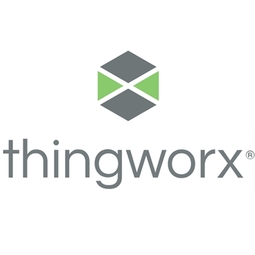Case Studies.
Add Case Study
Our Case Study database tracks 18,927 case studies in the global enterprise technology ecosystem.
Filters allow you to explore case studies quickly and efficiently.
Download Excel
Filters
-
(7)
- (5)
- (2)
-
(3)
- (3)
- (1)
- (1)
-
(1)
- (1)
- (1)
-
(1)
- (1)
- (1)
- (1)
- (1)
- (1)
- (1)
- View all 5 Industries
- (2)
- (1)
- (1)
- (2)
- (1)
- (1)
- (8)
Selected Filters

|
Complex Discrete Manufacturing with ThingWorx Analytics
ABC faced two major issues when utilizing the data collected. One is the size, complexity, and disparity of the data collected would take lot of man-hours to process and evaluate. Two is real-time data cannot be put into use due to the nature of data science analysis.
|
|

|
Data Gathering Solution for Joy Global
Joy Global's existing business processes required customers to work through an unstable legacy system to collect mass volumes of data. With inadequate processes and tools, field level analytics were not sufficient to properly inform business decisions.
|
|

|
Cutting-edge Predictive Analytics for HIROTEC Group
Hirotec needed to ensure continuous operations and to minimize unplanned downtime in its manufacturing facilities. Unplanned downtime is costly and compromises Hirotec's ability to deliver its goods to customers on time.
|
|

|
DeviceLynk Delivers Customized IIoT Solution
Previously to working with ThingWorx, DeviceLynk built an IIoT platform but found it lacked scalability. They needed something to capture and handle data from an unlimited amount of devices and customers.
|
|

|
LumenData Delivers Real-time Predictive Analytics through IoT
In 2013, LumenData found itself in need of adding new real-time predictive analytics capabilities to its suite of services. To meet this need, LumenData acquired a state-of-the-art streaming data, capture and real-time predictive analytics company. This solved the pure predictive analytics end, but left LumenData with a need to be able to build IoT-targeted services.From an IoT perspective, LumenData was still missing the means to create suitable applications and dashboards that would make it easy for its customers to effortlessly make sense of whatever predictive analysis they might require.
|
|

|
Leveraging the IoT to Gain a Competitive Edge in International Competition
Many large manufacturers in and outside Japan are competing for larger market share in the same space, expecting a growing demand for projectors in the areas of entertainment, which requires glamor and strong visual performance as well as digital signage that can attract people’s attention. “It is becoming more and more difficult to differentiate ourselves with stand-alone hardware products,” says Kazuyuki Kitagawa, Director of Service & Support at Panasonic AVC Networks. “In order for Panasonic to grow market share and overall business, it is essential for us to develop solutions that deliver significant added value.” Panasonic believes projection failure and quality deterioration should never happen. This is what and has driven them to make their projectors IoT-enabled. More specifically, Panasonic has developed a system that collects data from projectors, visualizes detailed operational statuses, and predicts issues and address them before failure occurs. Their projectors are embedded with a variety of sensors that measure power supply, voltage, video input/ output signals, intake/exhaust air temperatures, cooling fan operations, and light bulb operating time. These sensors have been used to make the projector more intelligent, automatically suspending operation when the temperature rises excessively, and automatically switching light bulbs. Although this was a great first step, Panasonic projectors were still not equipped with any capability to send the data over a network.
|
|

|
Delivers Seamless Scalability to IOTATOI
IOTATOI is a division of Power Agent Systems that has developed an edge server called the Universal Monitoring System (UMS). IOTATOI is using UMS as an edge tier data collector to monitor backup battery arrays in manufacturing, mines, and chemical plants. This experience with battery backups led IOTATOI to expand the system to any condition that can be monitored by sensors such as vibration, heat, temperature, and flow. IOTATOI found they needed to move from their original middleware to something that would allow greater scalability and to also present information in a much broader way allowing them to dynamically look at the information and perform benchmarking analysis, feeding the data into analytics engines and creating a much more actionable view.
|
|

|
Reducing the Rate of Readmissions
The client had limited or inefficient integration of its data sources, which made it difficult to see patients through a longitudinal lens. The client was, however, uniquely positioned to leverage the expansive patient data contained within its network of care, and set out to do so in 2012. Specifically, they wanted to improve the outcomes of patients with Ischemic Heart Disease (IHD) through improved care management with goals of reducing readmission rates, better managing patient cholesterol levels, and better managing patient blood pressure. Specifically, the regional healthcare provider was interested in implementing a machine learning platform, that quickly automates complex analytical processes and integrates powerful information into existing applications and portals.
|
|

